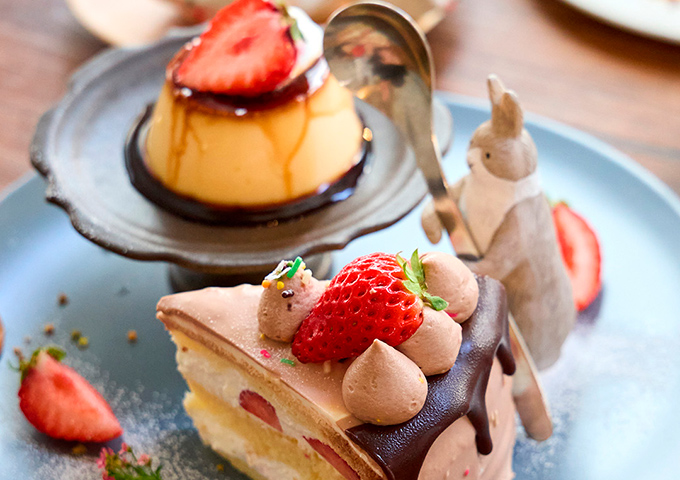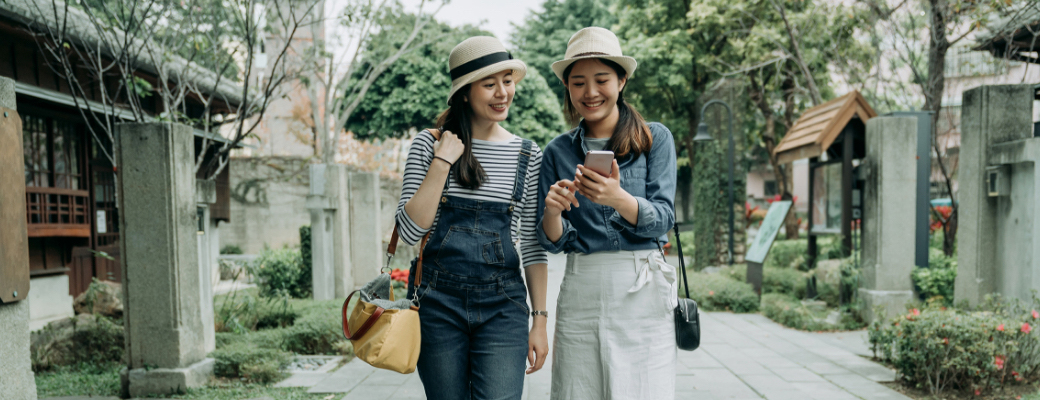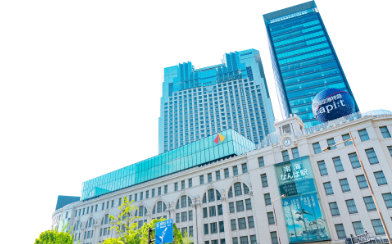
Food and Drinks
Take a relaxing break with cute sweets along the Nankai Line.

Temple Stay in Koyasan
Hello and welcome to our “Online Shukubo Experience” Tour. My name is Jonas and I have been living here in Koyasan for around 2 years. During the duration of this online tour, I want to show you around some of Koyasan’s most special areas, as well as give you an opportunity to get an inside look on what it is like to stay over night at a Buddhist temple.
Training grounds of monks
The Danjo Garan was the first area Kobo Daishi had constructed when he came to Koyasan. In creating the Danjo Garan he was focused on creating a training grounds so that Buddhist monks could peacefully study his newfound Shingon esoteric Buddhism which he discovered when traveling to China. Some of the most notable buildings in the Danjo Garan are the Mie-do; originally used as a training hall, now currently enshrines an image of Kukai. The first structure constructed in Garan: the Kon-do, was originally used for lectures and ceremonies. The Konpon Daito (Great Pagoda); a towering structure painted in a vibrant vermillion lacquer, depicts a 3-dimensional mandala with the cosmic Buddha in the center.
The largest sacred cemetery in Japan
Welcome to Koyasan’s Okuno-in. Japan’s largest cemetery and a dedicated UNESCO world heritage site, this 2-kilometer path is filled with hundreds of thousands of tombstones and ancient cedar trees. As Koyasan’s most sacred site, Okuno-in culminates with Kobo Daishi’s Gobyo Mausoleum where it is said he is still there today in eternal prayer after reaching nirvana.
The Cuisine for Kobo Daishi
The Shoujingu ceremony held in Okuno-in takes place twice a day in the morning at 6am and 10:30am. Regardless of weather, rain or snow, the Buddhist monks carry food prepared for Kobo Daishi up to the Toro-do Lantern Hall where it will be presented as an offering. This ceremony is evidence that Kobo Daishi still exists in eternal prayer.
The center of the 4,000 temples of Koyasan Shingon sect all over Japan and overseas
This is Kongobu-ji head temple. It is the main temple that all operations related to Shingon Buddhism take place out of with around 4000 branch temples located all over Japan and overseas. Kongobu-ji also features Japan’s largest rock garden; The Banryutei.
Little-known great spot in Koyasan
The Dai-mon can be thought of as the main entrance to Koyasan and is the first thing people making the pilgrimage up the Choi-ishi michi route see when they arrive. Overlooking the surrounding mountains, the Dai-mon is a beautiful spot you can view the sunset at all throughout the year.
One of the deep historical Shukubo
Today we’ll be staying at Muryoko-in in order to see what it is like to stay overnight at a Buddhist Temple. For dinner we’ll be having Shoujin Ryouri, also known as vegetarian cuisine which is customary for monks to eat since they don’t eat meat. Tomorrow we will also be attending the morning ceremony Gomgyo, as well as the Gomagyo fire ceremony.
Feel the taste of the original ingredients
Here we have Shoujiin Ryouri, also known as vegetarian cuisine. It is taught in Buddhism to not take the lives of other living beings, so as a result they don’t eat meat. Instead, different kinds of seasonal foods, including many vegetables, are used as the basis for creating this cuisine which encompasses 5 different styles of cooking.
Put your soul into every stroke of writing
Experience the Buddhist practice of copying the Heart Sutra, which encapsulates the central tenets of Buddhism. Allow time to flow gently around you and your mind to become still.
It starts from 6:00 a.m.
The Gongyo morning ceremony is conducted every morning at around 6am. It is a great opportunity to clear your mind and prepare yourself for the day to come.
Wish our happiness
The Gomagyo is a fire ritual conducted by many different Shukubo and are usually only viewable by those who stay overnight. Each Shukubo’s Gomagyo may be different so this is just an inside look at one of many ceremonies.
How did you like this Shukubo experience? While I’ve seen Gomgyo, and stayed overnight at Shukubo before, this experience always leaves me feeling refreshed. I hope you were able to enjoy this opportunity in getting a look at what it is like to stay overnight at a Buddhist temple, as well as see the charm Koyasan has to offer to those coming from all over the world. If you get the chance to come to Koyasan and experience it for yourself, I promise you it will be an experience you won’t forget.

